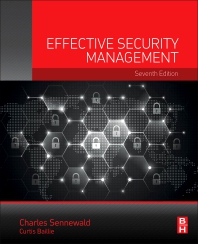The University of Kentucky (UK) is home to more than 30,000 students and 15,000 employees. Set in the heart of downtown Lexington, the university houses three medical centers, including a Level I trauma center, 18 residence halls, and nearly 100 other facilities across the institution. As the university with the highest enrollment in the Commonwealth of Kentucky, the UKPD began searching for ways to increase situational awareness.
When Dr. Eli Capilouto became the 12th president of UK in 2011, he communicated a vision for UKPD that would take a more holistic approach to campus safety and security. This meant incorporating emergency management, event planning, access control, video management, ID card services, interior and exterior annunciation, mass notification, and burglar alarms — tying all of these functions back to UKPD. Soon, UK’s central security system transitioned from 72 disparate systems to a single system with more than 8,000 access control points and 3,000 cameras.
What the university needed was more flexibility, scalability and a more effective way to manage and coordinate security events in real time. To unify the university’s vast video surveillance network and provide a single, centralized security station, UKPD selected the Salient Systems’ CompleteView Enterprise VMS. This selection process was in collaboration with UKPD’s systems integrator partner, STANLEY Security, and the team at consulting engineering firm CMTA, which was instrumental in providing the university a comprehensive specification for the security system upgrade that matched the specific requirements from UK. Both STANLEY and CMTA continue to support the security team at UKPD.
“With Salient, we have moved into a more flexible and scalable software-based environment for video storage,” said Nathan Brown, deputy chief of UKPD. “This more virtualized environment has allowed us to no longer be so physically reliant on hardware, which requires a lot of upkeep. Now, we can pivot by increasing or decreasing storage without manipulating the entire system as a whole.”
Stephen Cornett, security systems manager for UKPD, said that Salient allows them to scale more efficiently than the “boutique system” it replaced. “The scalability and the centralized nature of the VMS has allowed us to expand into some of our off-campus locations. It allows us a lot of flexibility with some leased spaces to be able to provide them more video security in those satellite locations without too much hassle,” he said.
As a whole, Salient’s VMS provides UKPD a high level of situational awareness. By utilizing the different features, Brown and Cornett have a better idea of what is going on in and around the university. Monitoring everything from student move-in, to sporting events, to on-campus hospitals is now more effective and efficient. UKPD even used the system in the emergency operations center (EOC) during the ongoing COVID-19 pandemic.
One example of the system’s success is when an armed man entered one of the university’s hospitals in March 2021. With the newly installed high-resolution IP cameras connected to CompleteView, UKPD immediately used the VMS to locate the suspect and car matching the descriptions provided by the local police department.
“With Salient, we were able to develop a plan based off what we knew, where he was and what we knew about the area, and we were able to continuously monitor that area,” said Joe Monroe, UKPD’s chief of police. “This allowed us to organize and make a safe arrest with a peaceful resolution — without harming anyone in the process. It could have been a very difficult day, but Salient gave us the ability to view live video and confidently make informed decisions that kept everyone safe.”
The CompleteView VMS also provides UKPD with additional situational awareness in other facets of campus operations. Now, UKPD can fully leverage its two video walls: one at its emergency dispatch center, and another in the stadium command center at Kroger Field. The old system only allowed security personnel to view eight cameras at a time. With Salient, UKPD can view more than 20 camera feeds simultaneously. UKPD uses the video wall at Kroger Field mainly on game days to show traffic flow around the perimeter of the stadium for both pre- and post-game management.
“It’s improved our operations because now we can see everything we need to see all at once instead of having to bounce around from camera to camera,” Cornett said.
From a network perspective, Cornett and his team try to consume as little bandwidth as possible when using the system. Some of the off-campus facilities that need access to cameras and recordings have a limited bandwidth connection back to the campus. Salient’s dynamic resolution scaling automatically scales the resolution at the server to match the client requesting the video stream. This ensures that users get the best quality video without wasting any network bandwidth.
"Dynamic resolution scaling makes a big difference on reducing network costs and preserving available bandwidth, especially in our locations where network availability is low and additional bandwidth can get expensive,” Cornett said.
The CompleteView Web Client in particular has been a “game changer” for UKPD and has reduced UKPD administrative work in adding new users and permissions to the system after only a few months of use.
“Our dispatchers, detectives, and our records group were all able to switch over to the web client without any issue whatsoever,” Cornett said. “Once we set somebody up, we send them instructions on how to access the system, and they’re good to go because they can get to it from any web browser. It’s been a huge timesaver for us.”
The web client has also simplified issuing and revoking permissions. As the threat of cyberattacks increases the need for stronger cybersecurity, access management is critical. The Salient system allows administrators to grant personnel permissions, ranging from view-only privileges to the ability to review recorded footage based on specific amounts of time and other criteria. UKPD can also add a user on the fly, quickly getting them up and running without having to navigate additional steps such as figuring out how to get admin rights to their machine, getting it installed, locking it down, and get it working again. “It gives us different levels of security and protection of what we have on campus and what our end users can do,” Brown said.







